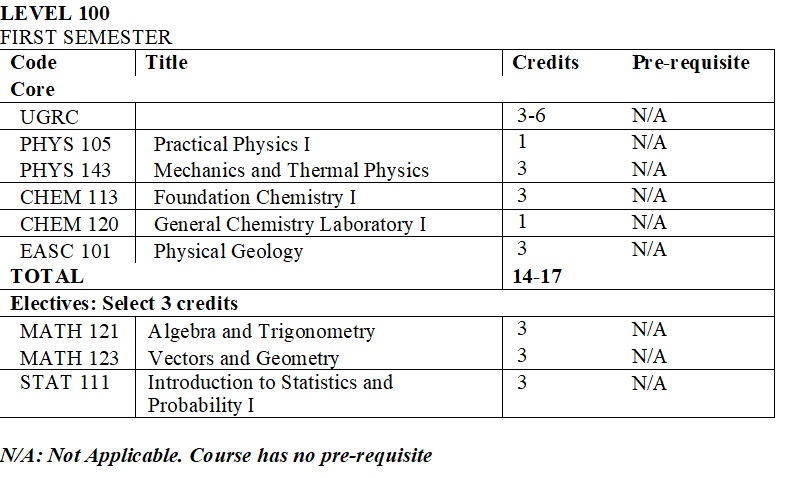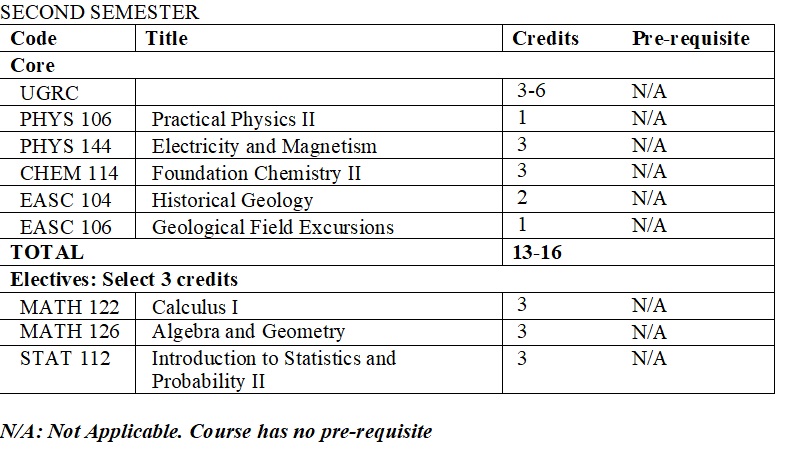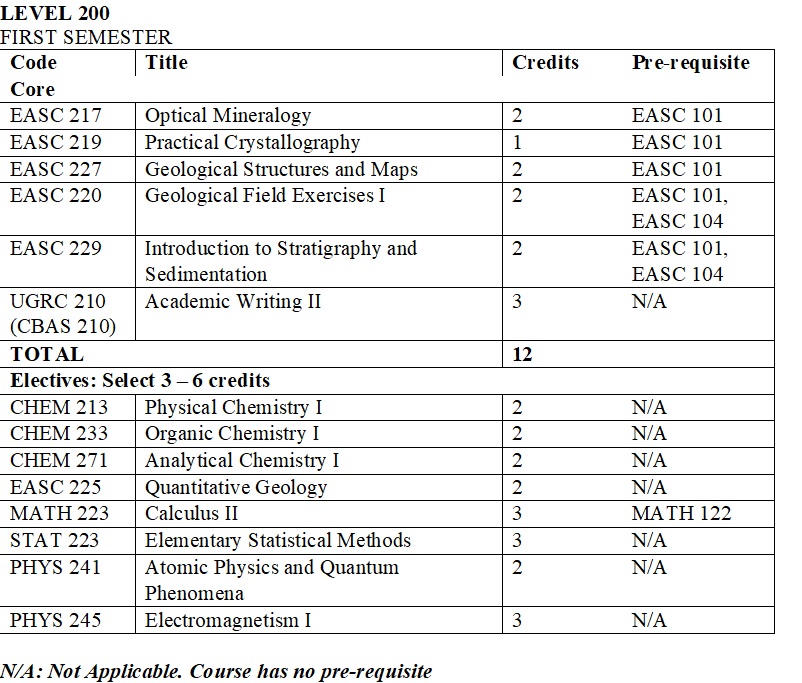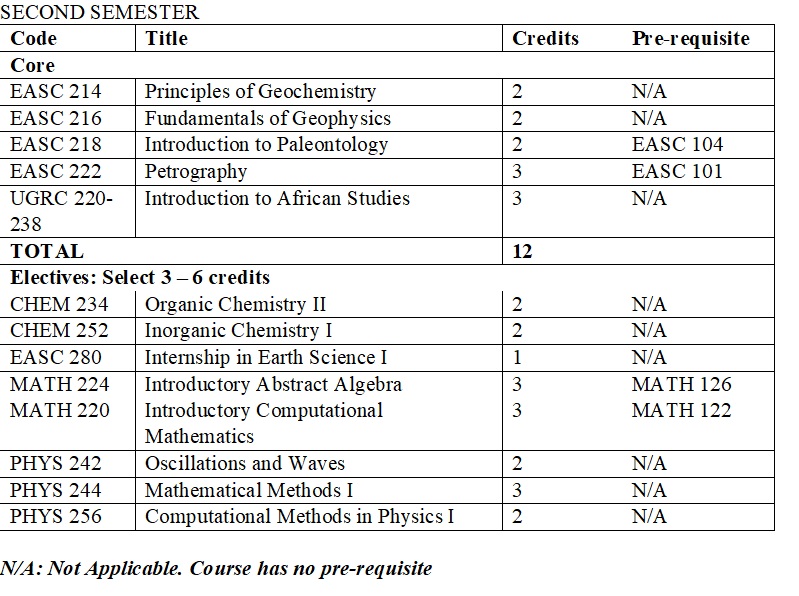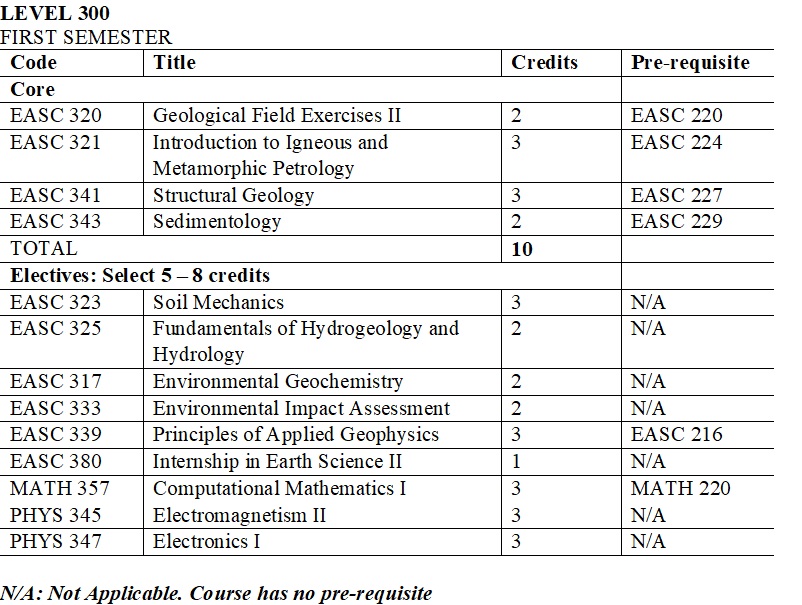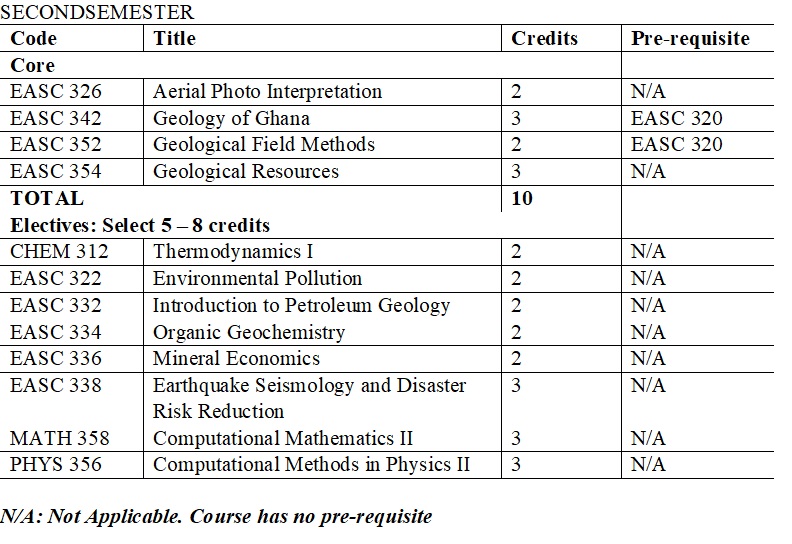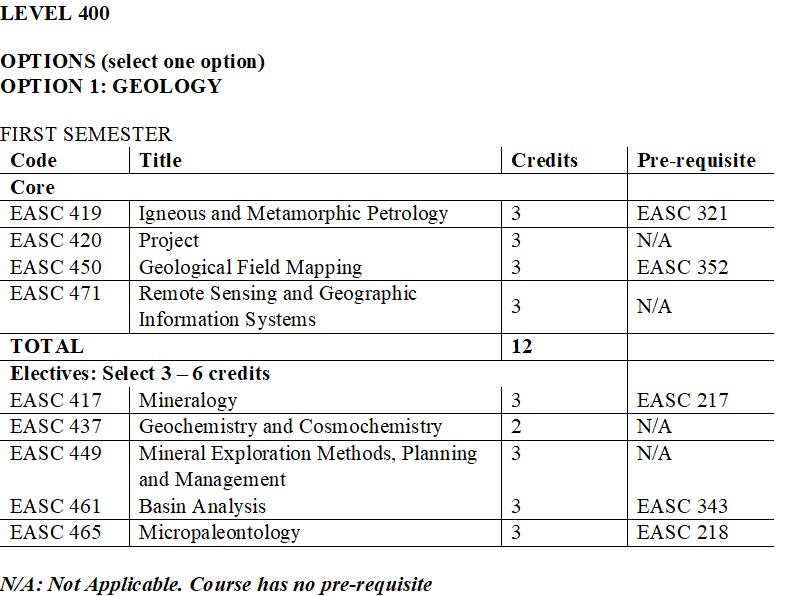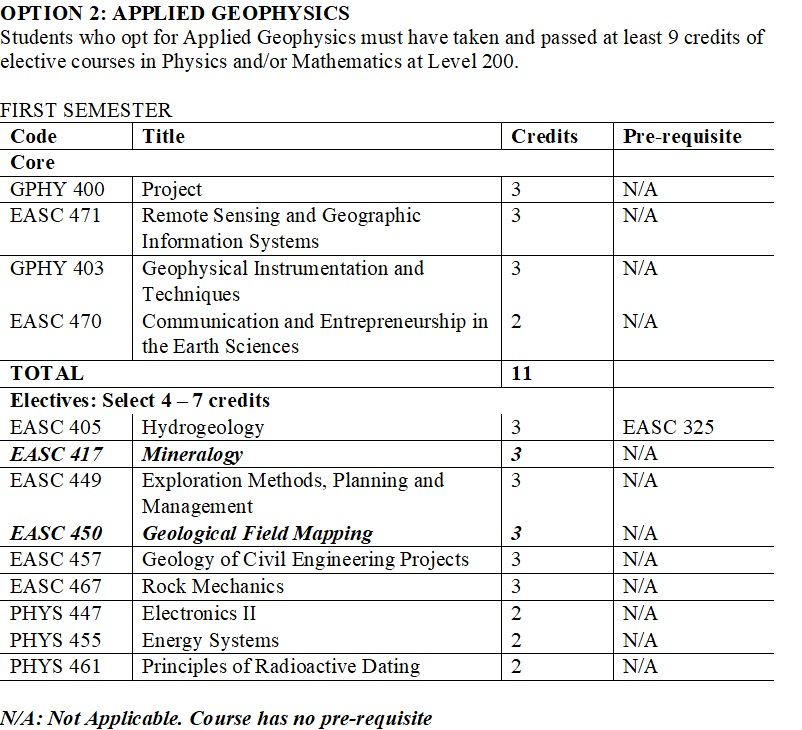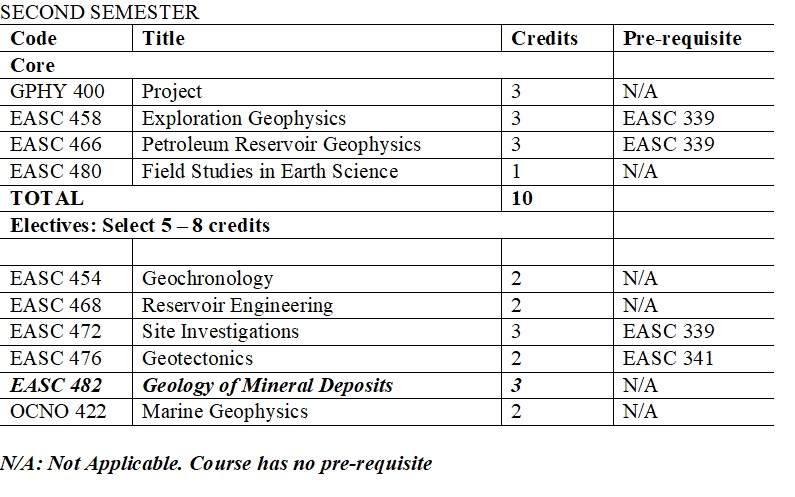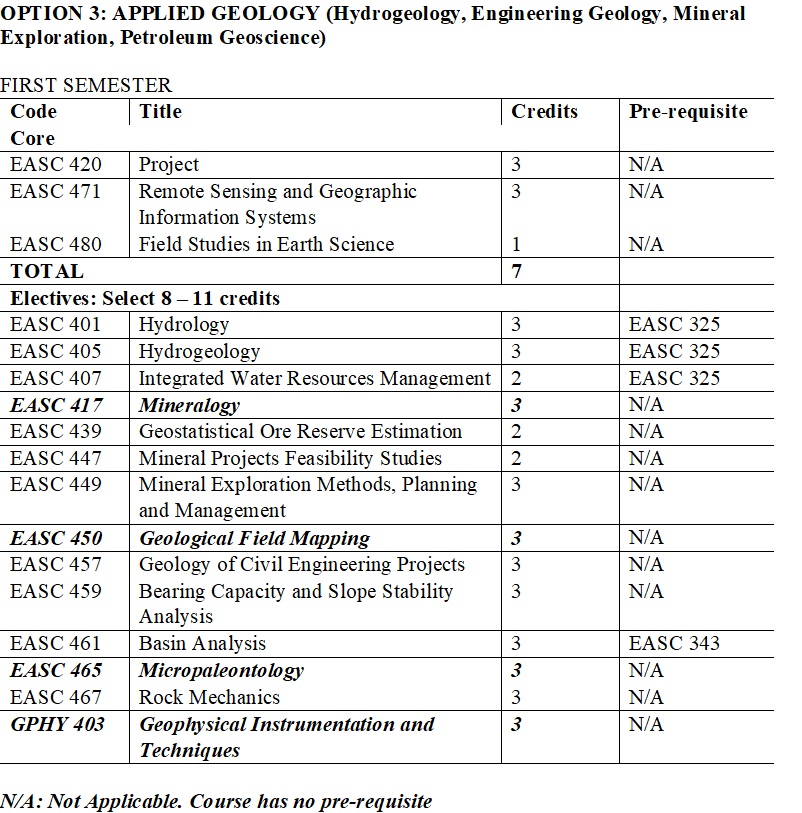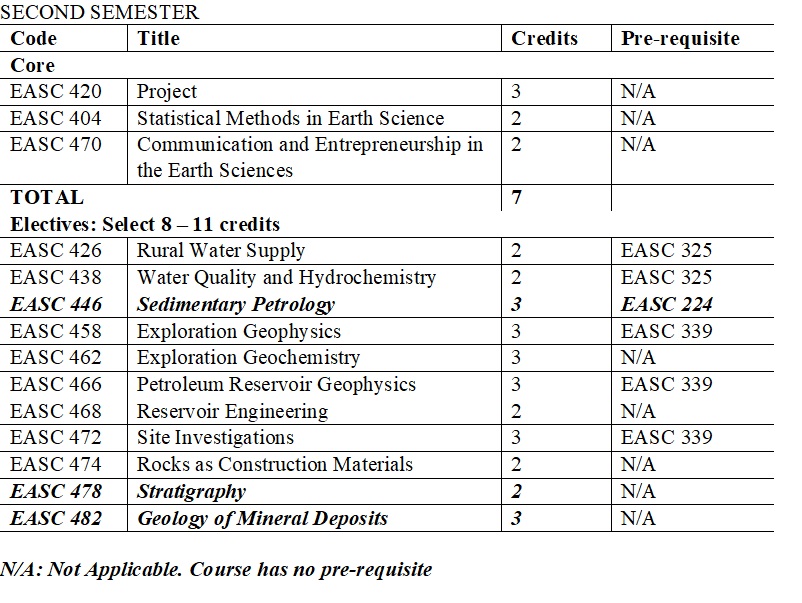HIGHLIGHTS OF CHANGES IN THE UNDERGRADUATE PROGRAMME
Level 100
The course EASC 102: Geological Map Work has been moved to Level 200 and combined with the course on Geological Structures. The reason for the move is that most textbooks on geological structures treat these together, where the geological structures treated are related to their manifestation on geological maps. In its place, a new course, Geological Field Excursions, is introduced to present a practical way for first year students to learn about geology.
Level 200
The programme has been structured to allow Earth Science students take core courses in the Earth Sciences (mainly Geology) and electives from the basic sciences. The reason for this is that basic sciences, specifically Physics, Chemistry and Mathematics, form the foundation of any Earth Science programme.
The 3-credit course Geological Field Methods I has been renamed Geological Field Exercises I and credits reduced to 2.
A course in Quantitative Geology (EASC 225) has been introduced as an elective course to introduce students to quantitative problem solving techniques in the geological sciences at the basic level. They will build on this course in the upper undergraduate levels and at the graduate level.
Level 300
At this level students take core courses mainly in Geology and take electives from applied fields such as geophysics, hydrogeology, engineering geology, petroleum geology and environmental geology.
Level 400
On the basis of elective courses selected at Level 300, students select a specialisation in one of these fields in the final year: Geology, Applied Geophysics, and Applied Geology. Upon successful completion of the programme students will be awarded a BSc degree in the following, depending on option selected at Level 400:
- BSc Earth Science (Geology)
- BSc Earth Science (Applied Geology)
- BSc Earth Science (Applied Geophysics)
PROGRAMME STRUCTURE
SINGLE MAJOR EARTH SCIENCE DEGREE PROGRAMME
Students will be awarded a BSc degree in the following, depending on option selected at Level 400:
- BSc Earth Science (Geology)
- BSc Earth Science (Applied Geology)
- BSc Earth Science (Applied Geophysics)
